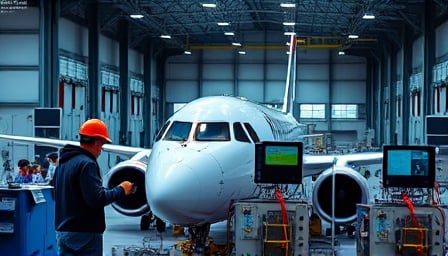Air Industries Group: Navigating Market Volatility
In the dynamic world of aerospace and defense, Air Industries Group, a U.S.-based industrial company based in Bay Shore, has been making headlines due to its recent stock performance. Specializing in the manufacturing of aircraft structural parts, the company primarily serves defense contractors, a sector known for its cyclical nature and sensitivity to geopolitical events.
Stock Performance: A Rollercoaster Ride
Over the past year, Air Industries’ stock has experienced significant volatility. The company’s shares reached a 52-week high of $9.4399 USD on August 21, 2024, only to plummet to a low of $3 USD by April 6, 2025. As of May 12, 2025, the stock closed at $3.59 USD, reflecting a substantial decline from its peak. This fluctuation underscores the importance for investors to stay vigilant and informed about market trends and the company’s operational performance.
Understanding the Volatility
The dramatic swings in Air Industries’ stock price can be attributed to several factors. The aerospace and defense industry is inherently volatile, often influenced by changes in government defense spending, international relations, and technological advancements. For Air Industries, which relies heavily on contracts with defense contractors, these external factors can significantly impact revenue and profitability.
Financial Analysis: A Closer Look
To grasp the reasons behind the stock’s volatility, a detailed analysis of Air Industries’ financial health is crucial. Investors are encouraged to examine the company’s revenue streams, cost management strategies, and any recent changes in its contract portfolio. Understanding these elements can provide insights into the company’s ability to navigate the challenges posed by its industry.
Market Position and Future Outlook
Despite the recent downturn, Air Industries Group maintains a market capitalization of $13,626,512 USD, indicating a solid foundation in the aerospace and defense sector. The company’s focus on producing high-quality aircraft structural parts positions it as a key player in the supply chain for defense contractors.
Looking ahead, the future for Air Industries will likely depend on its ability to secure new contracts and adapt to industry changes. As geopolitical tensions and defense budgets evolve, the company’s strategic decisions will play a critical role in its ability to stabilize and grow its stock value.
Conclusion
Air Industries Group’s journey through market volatility serves as a reminder of the complexities within the aerospace and defense industry. For investors and stakeholders, staying informed and conducting thorough analyses will be essential in navigating the uncertainties ahead. As the company continues to adapt and innovate, its resilience will be tested, but its strategic positioning offers potential for recovery and growth in the long term.
